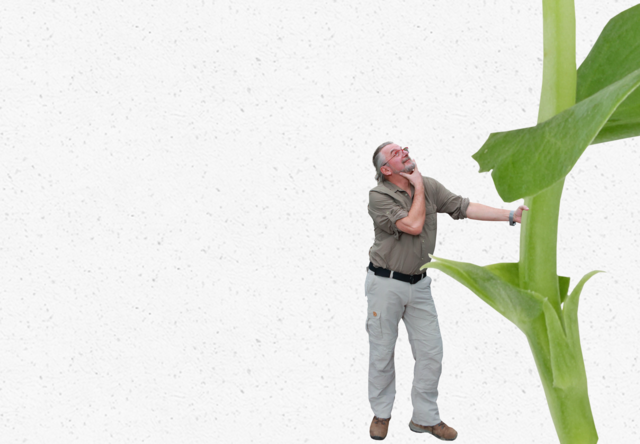
Koppert Cress and the beanstalk
While the beans in the famous fairy tale “jack and the beanstalk” reach high into the sky, the bean seedlings at Koppert Cress stay nice and small.
Graceful tendrils
While the beans in the famous fairy tale “jack and the beanstalk” reach high into the sky, the bean seedlings at Koppert Cress stay nice and small. Of course, this refers to Affilla Cress, a small bean top which is a feast for the eyes because of its graceful tendrils.
Before he took over the then radish company from owner Gerrit Koppert in 2002, Rob Baan was regularly found all over the world. “I worked in the vegetable seed industry. That was a great way to learn a lot about vegetables that are eaten worldwide. That's how I came across pea tops in Singapore. They are called "dou miao" there, but are also known as "toumyou" in Japanese or, in Chinese, "he land dou", which means "Dutch".
Peas are a real spring product, harvested in China at the very beginning of spring. This so-called Snow Pea owes its (call) name to the period in which it grows. “We know China as a warm country, but there are major temperature fluctuations. It can be really cold at night and in winter. Especially when the wind comes from Siberia, it can easily reach twenty degrees below zero in Beijing. Only when the sun is shining, the weather is crystal clear and you are out of the wind, it gets very hot during the day.
So what did they eat? Many vegetables cannot grow in such cold environments. When there were no greenhouses, the Chinese mainly had winter vegetables: storage vegetables, sauerkraut and pickled vegetables. There was nothing more. But the Chinese are inventive. They sow peas on the south side of the house where the sun is shining all day, allowing the peas to grow at only 4°C. There is no product that can germinate at a lower temperature than peas. Because it is too cold to flower, and pods have no chance to grow on the plant, people only ate the pea buds that rose above the snow. Hence the name Snow Pea. The fact that the plant sometimes froze was no problem; it just came back up again. Snow Peas are therefore the first fresh vegetables of early spring.
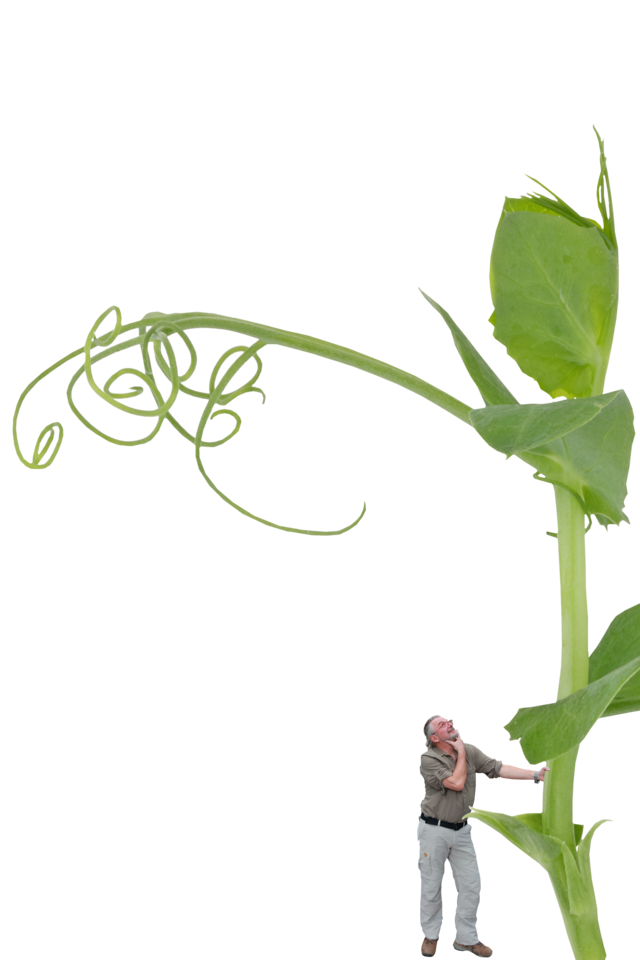
Small garden peas
Once working at Koppert Cress, Rob started his search for valuable products suitable for gastronomy. This reminded him of the Chinese pea tops, but growing this product was easier said than done.
“I was very enthusiastic about this product, but my colleagues were certainly not in favor of the peas because it is a tough job to harvest them. This was followed by an ultimatum from our so-called internal "union". "The colleagues said to me: Either the peas go, or we, or you." Laughs Rob. “Fortunately, we realized that peas could also be grown as cress. We opted for a pea variety with beautiful, graceful tendrils (Affilla), which we would grow in our famous blue container. Actually, the peas are now "harvested" by the chefs, but this is better because the chefs are able to pick them whenever they want so the plant stays completely fresh until usage. "
“Did you know that pea pods used to have no logical shape at all? At the front and end of the pod the peas were small and in the middle they were large. The little pea got the least nutrition and the big one the most. And what was the result: the small peas were very sweet, while the large ones became mealy. When you were sorting peas, you wanted the small ones, because they were tasty. You can understand: several breeders immediately started growing the 'extra fine' small peas. The result is that those small refined peas are less tasty than those we found at the ends of a pea pod; now they're all mealy.”
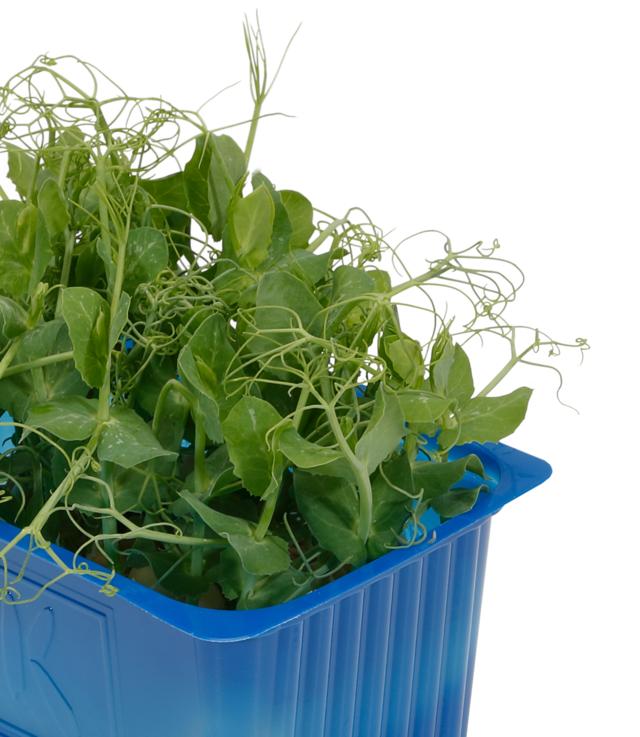
The taste of spring
In the 1980s, Rob came into contact with the American Calvin Lamborn, also known as the father of the Snap Pea or Sugar Snap. “Calvin is a breeder who collected all kinds of pea material. He eventually grew a snow pea and regular pea hybrid. The shells of those peas turned out to be edible and so the Sugar Snap or Snap Pea was born. Sugar Snaps were really an invention: incredibly tasty and they didn't have any unpleasant treads coming from the pods. Calvin became world famous and that is why I have sold many of those seeds in Zimbabwe, Kenya and a lot of other countries. And he didn't stop there. As a breeder, Calvin continued to make crazy pea variations. The tendrils of a pea, which you see on the Affilla Cress, are actually leaves that have become more slender than leaves due to evolution. If you then stand by a field of peas and pull a pea stalk on one side, you can see the plants moving on the other side of the field. All these tendrils interlock so strongly. Calvin was able to reverse that process from leaf to vine. Combine that with a very sweet pea variety and you get sweet pea leaves without tendrils that are very tasty: our Salad Pea. ”, Says Baan.
Although the peas are a real spring product by nature, they are grown year-round in the greenhouse at Koppert Cress. You could say: at Koppert Cress it is always spring.
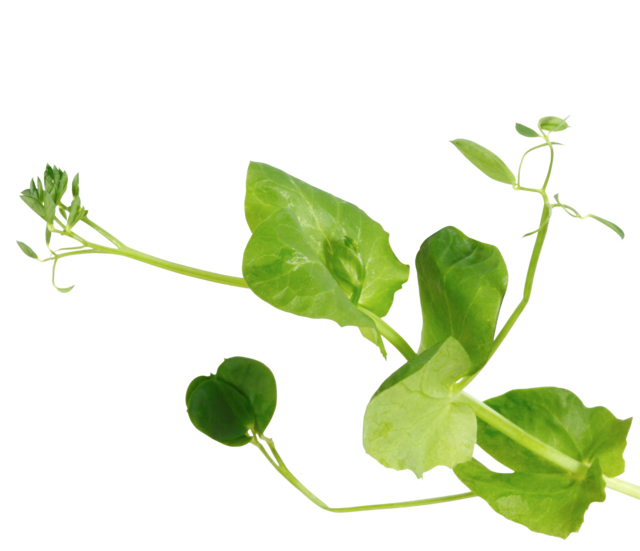
A sweet incursion, and a crunchy bite
In several countries, the species "lablab purpureus" is grown for the beans, but not everyone knows that the flowers of this plant are also edible. That is why the Bean Blossom cannot be missed in this bean themed article.
Although flowers are generally very popular in professional kitchens, they usually do not keep well and often lack flavor. In contrast, the Bean Blossom is sturdy and can therefore be stored longer without losing structure. Additionally, the flower has a sweet bean flavor and a crunchy bite in the heart. A very decorative and tasty plant.
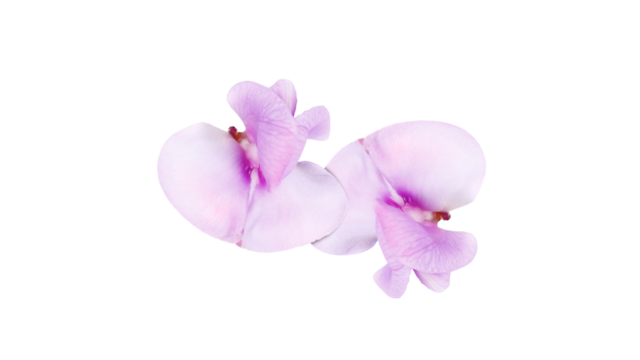
Related products
Say yes to the cress